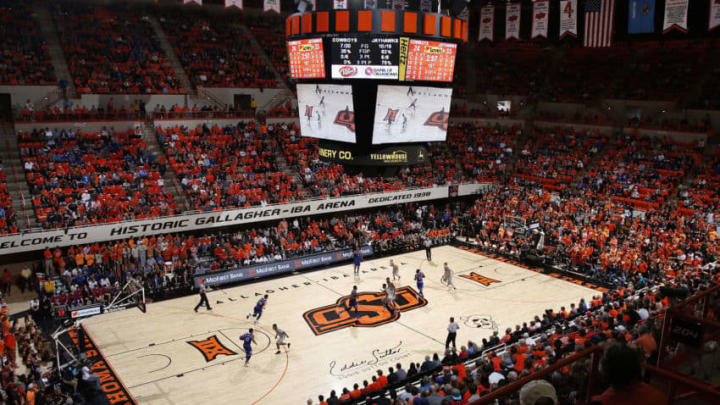Texas Tech basketball: Why the Red Raiders lost to the Cowboys

As we look inside the box score of the Texas Tech basketball team’s loss to Oklahoma State, it isn’t hard to figure out why the Red Raiders lost.
When the Texas Tech basketball team dismantled TCU on Monday night, we all were hopeful that a February run the likes of the one we saw a year ago was in store. Of course, Saturday’s 73-70 defeat in Stillwater put those hopes to bed.
This was another reminder of how imperfect the current version of the Red Raiders is. Though Tech can beat any team it faces, there’s also a number of vulnerabilities that make Chris Beard’s team susceptible to being beaten by any team it plays.
We saw many of those flaws on display in Stillwater. Most notably was this team’s lack of size.
When T.J. Holyfield was forced to sit out long stretches because of foul trouble, the Red Raiders had to resort to small ball, which didn’t turn out well. Once again, Tech’s lack of a second reliable post player proved to be damning.
Despite seeing his team physically outmatched down low, Chris Beard played 7-footer Russell Tchewa a scant 42 seconds. It’s apparent that no matter how popular “Big Russ” has become with the fan base and how well he plays in his limited time on the court as was the case against both TCU and Kentucky, he just isn’t going to be much of a factor this season because, for whatever reason, Beard just does not trust him to play significant minutes.
Another flaw that proved to be costly was the lack of a player who can create offense off the dribble in the clutch. We often throw around the idea that teams need a true point guard to initiate the offense in key situations but that isn’t necessarily a priority for Beard, who prefers a roster of positionless players.
However, this team has struggled time and again in late-game situations and often that has been because none of the guards on this year’s team are able to create off the dribble when their team simply has to have a score. That was what Keenan Evans did in 2017-18 and Jarrett Culver did so well a season ago and a player that can fill that role is truly missing from this year’s team.
At the end of Saturday’s game, Beard had Davide Moretti, Jahmi’us Ramsey, Kyler Edwards, T.J. Holyfield, and Kevin McCullar Jr. on the floor. None of those players are known for their ability to create off the dribble and it once again proved problematic as Ramsey turned the ball over when Tech was down just a point in the last minute in what proved to be the game’s turning point.
Those flaws are just going to be what we have to live with this year and it appears that the Red Raiders are still trying to work out how to overcome them after 25 games of the season. It was yet another disappointing loss in a season full of them as seven of Tech’s nine losses this year have seen the Red Raiders be within a single possession of the lead in the final two minutes.
So let’s go inside the box score from Saturday’s game to see how these flaws manifested themselves. When we do, it will be painfully obvious why the Red Raiders lost to a team that had won just two conference games prior to beating the boys in Scarlet and Black.